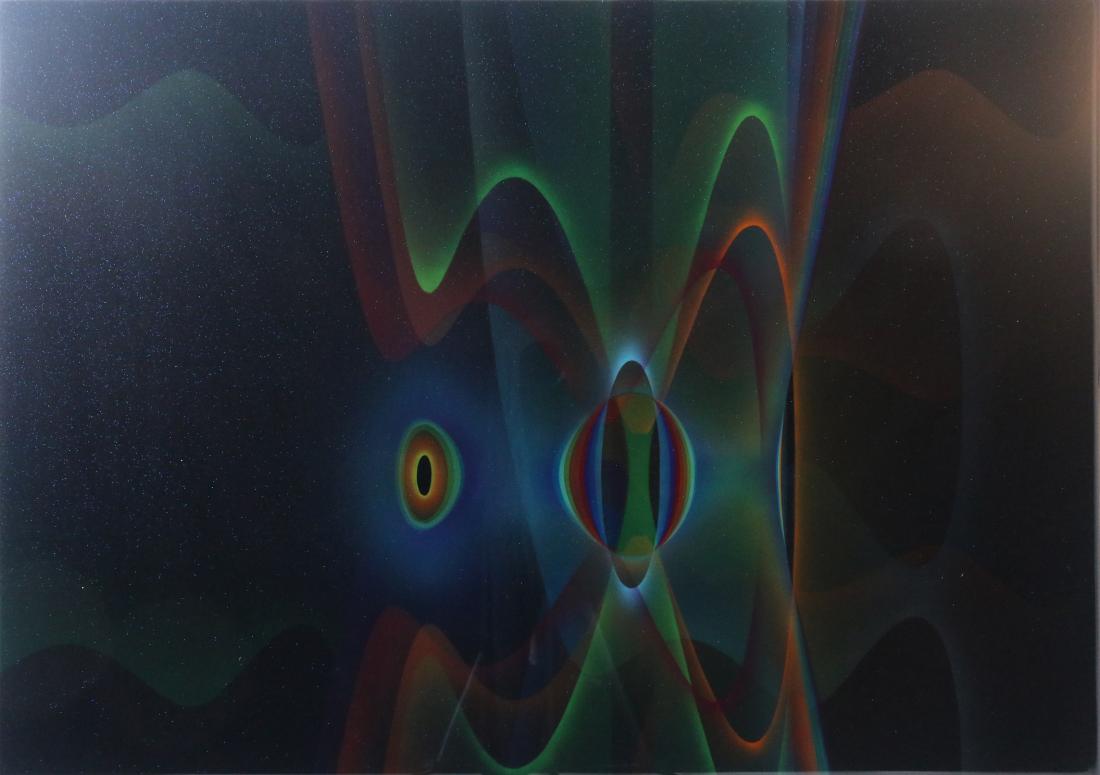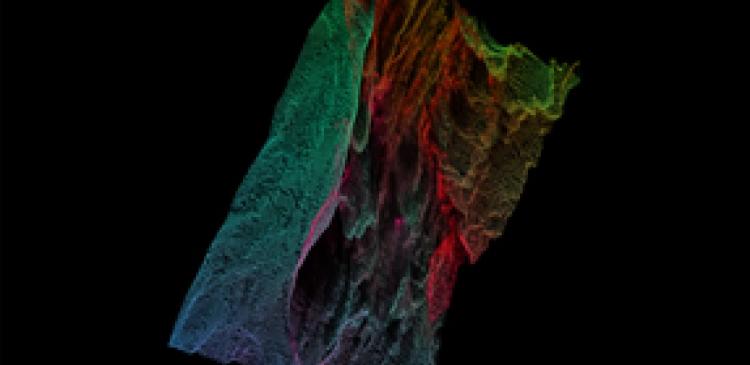“Invisible Halo”
Hirakawa believes that technological tools and computation, rather than his imagination, are the most effective way for him to achieve the sublime. During his residence, he relied on computation to explore dimensions as a theme for his works.
Hirakawa learned that, for mathematicians and physicists, dimensions are just a parameter. Width and height, for example, contain two kinds of information, thereby allowing for two-dimensional space. Six kinds of information, meanwhile, permit six-dimensional space.
Hirakawa applied this idea to digital images, and found that every dot in these images holds five kinds of information: X and Y for width and height; and R, G and B for colour. Based on this, Hirakawa wrote a computer code that plotted pixels from a two-dimensional digital image in a five-dimensional Euclidean space. Every digital image can be rotated in five-dimensional Euclidian space. Hirakawa’s “sunset” is an example.
Painter Yasuo Nomura joined Kavli IPMU as part of the institute’s artistin-residence programme. Nomura’s goal was to “explore the possibility of using scientific theories of multiple dimensions to inform two-dimensional paintings.”
Modern mathematics and physics use highly abstract concepts to understand nature. Yet ideas constrained by our normal senses—and often based on 19th century trends—still pervade today’s paintings.
Nomura is rethinking the essence of art, especially painting. His new artwork, such as “Invisible Halo”, might allow people to visually experience high-dimensional space.
“Invisible Halo” describes a highdimensional halo for elliptic curves. In creating this piece, Nomura was inspired by astronomers’ successful observation of a halo, which they relied on to study dark matter.
Further information
Aya Tsuboi | E-mail: [email protected]
Kavli Institute for the Physics and Mathematics of the Universe
The University of Tokyo




